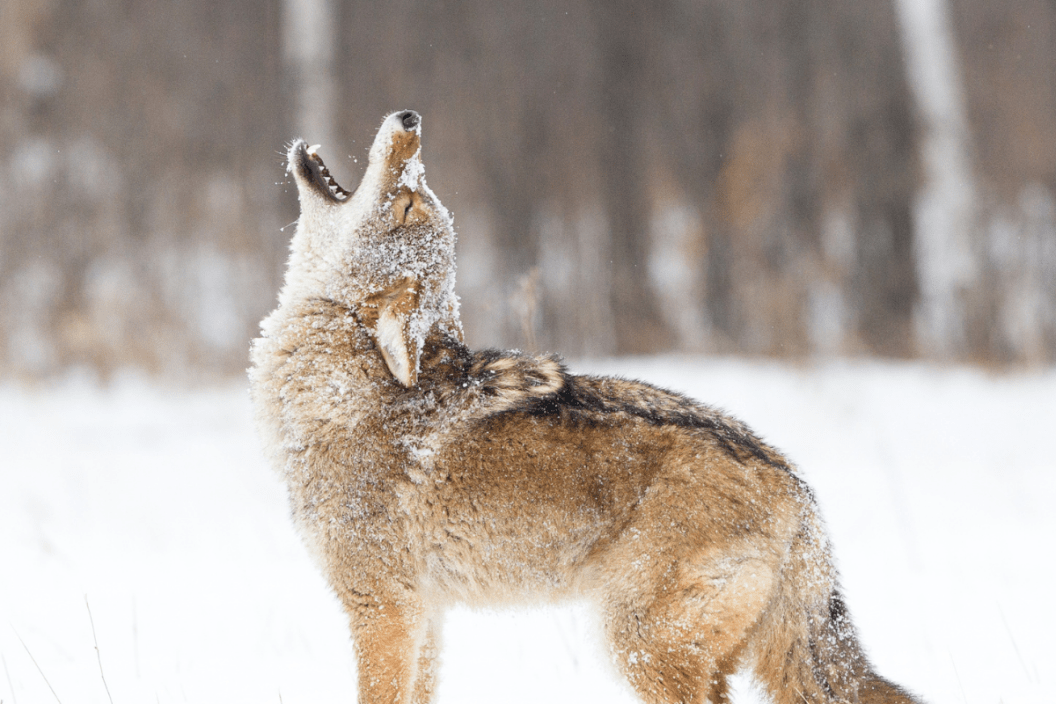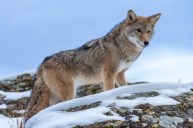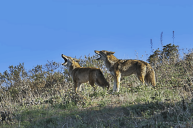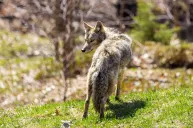Knowing the variety of sounds from coyotes, or a group of coyotes is important. It might even save a life.
It can be quite startling at first — even frightening, but it's important to know what a coyote sounds like and the different vocalizations a coyote (a.k.a. the "Song Dogs" of North America) and their pack of coyotes can make.
Like your average domestic dog, there are a variety of sounds and vocalizations that can come out of a coyote and his pack — and also like a dog, different coyote vocalizations can mean different things. Your knowledge of coyotes howls and yips will come in handy if and when the animal comes wandering around or close to your yard or farm, especially if you are a farmer with chickens or any sort of roaming farm animals. Keeping coyotes away starts with preparation, but knowing what to listen for is vital if they close in.
Next time you think a coyote is near, listen carefully to the vocalizing of America's song dogs before deciding if danger is imminent.
What Do Coyotes Sound Like?
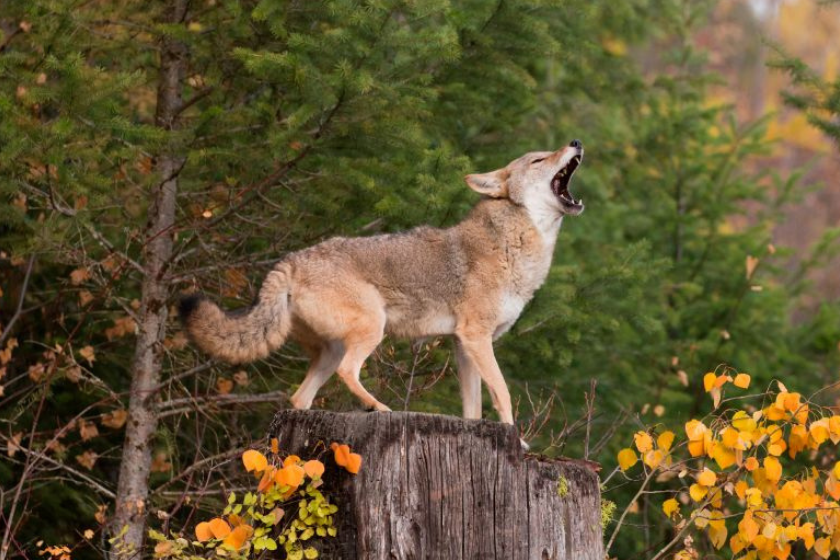
Avalon/Universal Images Group via Getty Images
Coyotes (Canis latrans), often called "song dogs", are predators that have a documented history of attacking pets and farm animals. While they can sound like dogs, they have a more extensive vocal range; they can make up to 11 different sounds! These tough guys emit a number of loud, powerful spine-chilling sound patterns to communicate with each other within their pack.
Here are some common coyote sounds and calls:
Woof: Coyotes make this sound when they are threatened. This coyote alarm is low-intensity and short range.
Growl: Like dogs, growls are used as a threat. They are low warning sounds but usually with a high-intensity pitch and are used as warning signals to warn other coyotes of danger.
Huff: When a coyote is huffing, they are threatened. These high-intensity puffs of air through the nose and mouth are used to ward off any opposing threats or any danger coming their way.
Lone Howl: When a single coyote lets out a lone howl, he is trying to find his pack.
Group Yip-Howls: On the other hand, when you hear a group howl, it's because a group of coyotes is signaling their location to others, usually to the one giving the lone howl.
Yelps: A coyote yelp can show submission. However, coyotes can also make this sound when they are really startled; these can be described as a high-intensity whine. But when coyote puppies yelp, it is usually a distress call rather than a startled response.
Coyotes can also whine, bark, and even make a loud bark-howl sound. One of the more common coyote sounds is the bark: Barks can range from high to low intensity and are used as a long-range warning or threat. The bark-howl is used also as a long-distance threat or alarm, but it's just higher in intensity and pitch. Coyotes usually make this sound when they are giving a more serious warning. Whines, on the other hand, can mean all sorts of emotions: they are used to communicate pain, hunger, or distress.
This article was originally published December 8, 2020.
